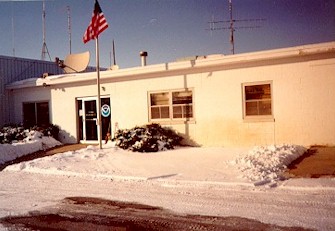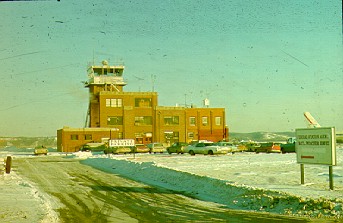
Two storm systems will track through the central and eastern U.S. today through this weekend with areas of gusty winds, rain and heavy snow. Severe thunderstorms and heavy to excessive rainfall is forecast today from the Lower Mississippi River Valley to the Tennessee Valley. Damaging winds, a few tornadoes, and areas of flooding are possible. Read More >
National Weather Service Omaha/Valley,NE
Home | Office | Staff |
The Omaha Weather Forecast Office (WFO) has a long and storied history. Weather observations in the Omaha area began during the Lewis and Clark expedition in the early 1800s. In the late 1800s, upper-air data collection commenced using kites. Today, rawinsonde upper-air observations are conducted in western Douglas County at the present-day National Weather Service office.
++++++++++++++++++++++++++++++++++++++++++++++++++++++++++++++++++++++++++++++++++++++++++++++++++++
Current location
The Omaha/Valley, NE Weather Forecast Office (WFO) is situated roughly one mile northwest of Valley, Nebraska—about 23 miles west-northwest of downtown Omaha and approximately 32 miles northwest of Offutt Air Force Base. The office occupies a 10-acre site at the southeast corner of North 288th Street and Ida Street (Nebraska Highway 64).

The present forecast office, upper air site, and WSR-88D radar has been at Valley since 1994.
++++++++++++++++++++++++++++++++++++++++++++++++++++++++++++++++++++++++++++++++++++++++++++++++++++
Previous site.

The upper air, radar, and forecast offices were co-located at the 72nd and McKinley site from 1974 to 1994.
++++++++++++++++++++++++++++++++++++++++++++++++++++++++++++++++++++++++++++++++++++++++++++++++++++
Dual Operations 1954 to 1974

The second floor at Eppley Airport was the forecast office site from 1941 to 1974.

The upper air and radar (WSR-1) site was located at North Omaha Airport from 1954 to 1974.
++++++++++++++++++++++++++++++++++++++++++++++++++++++++++++++++++++++++++++++++++++++++++++++++++++
July 19, 2011, Installation and testing of the new AWIPS II forcast system began.
October 7, 2013, AWIPS II system was accepted as operational.
1804 - late July - Lewis and Clark expedition records weather observations near Omaha and Council Bluffs.
1820-1826 - First continuous temperature observations taken in Omaha area by U.S. Army Surgeons (Ft. Atkinson near Ft. Calhoun).
1870 - First U.S. Signal Corps Office in Omaha in Old Market Area.
1871 - First river gage installed to monitor the Missouri River at Omaha.
1891 - Weather Bureau established under Department of Agriculture.
1897-1898 - First kite flight with temperature recording equipment.
1898 - First national convention of U.S. Weather Bureau held in Omaha.
1909 - Exploratory free balloon flights at Fort Omaha.
1913 - Omaha Easter Sunday tornado on March 23. 156 people killed, 1700 homes destroyed or damaged.
1919 - Weather Bureau takes over pilot ballon program from the Signal Corps.
1931-1938 - Airplane flights used to obtain upper air data.
1938 - First radiosonde flight replaces airplane soundings.
1941 - City office and airport offices consolidated at Eppley Airfield.
1952 April 18 - All time record flood on Missouri flood at Omaha.
1954 September 16 - Upper air site established at North Omaha Airport.
1955 - The WSR-1 weather radar installed at North Omaha Airport.
1972 - Weather Service forecast office for Nebraska established at Eppley Airfield in Omaha.
1974 - North Omaha airport and Eppley Airfield offices consolidated at 72nd and McKinley (North Omaha).
1975 May 6 - Omaha Tornado. Three deaths, hundreds injured and $150 million in damage.
1977 - WSR-74C weather radar installed at North Omaha.
1994 - Weather Forecast Office moved to location northwest of Valley, Nebraska. WSR-88D doppler radar installed.
1996 June 12 - Wind gust of 92 mph is recorded at the Weather Service office.
2019 March 12-18 - Deadly flooding impacted a large portion of eastern Nebraska and western Iowa. WFO Omaha was temporarily evacuated due to flooding.